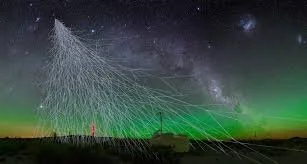This week’s post is devoted to the search of Jupiter’s lightning bolts (aka gamma-rays from dark matter), the construction of new astrophysically-motivated black hole mass function and subsequent search for the black hole mass gap, and a (unusual for this blog, I know!) philosophical discussion on the anthropic principle.
Top arXiv papers from Week 12, 2021
Top arXiv papers from Week 39, 2020
Top arXiv papers from Week 37, 2020
After a much needed 3-week break in Spain and 2 weeks “at” the Cosmology from Home conference (great talks, great format, great work by the organizers, 5+ stars from my side), the weekly arXiv synopses return! This week I cover the first constraints on small-scale non-Gaussianity from the UV galaxy luminosity function, astrophysical signatures of black holes carrying magnetic charge, and the HMCODE-2020 code for modelling the non-linear matter power spectrum. Enjoy!
Top arXiv papers from Week 30, 2020
Top arXiv papers from Week 29, 2020
Top arXiv papers from Week 27, 2020
Top arXiv papers from Week 25, 2020
This week is a bit special, and I have been debating with myself for some time whether I should have talked about the XENON electronic recoil excess we all have heard about, reported in 2006.09721 (this inner debate is one of the reasons behind my delay). Ordinarily I would have done so, but this time I opted for no, simply because there is much better coverage on the XENON result out there than anything I could possibly produce (needless to say many other popular science articles on the XENON results are instead pure junk). Natalie Wolchover is probably one of my favorite scientific journalists (by far the best among the ones I have interacted with), so for those interested in an excellent coverage of the XENON result, I recommend her piece on Quanta Magazine. Having said that, I’ve devoted this week’s entry to a new measurement of H0 from the Baryonic Tully-Fisher relation, a new neutrino mass forecast for cosmology taking into account a very subtle effect on the galaxy bias, and a study of the shadows of rotating regular black holes.
Top arXiv papers from Week 22, 2020
Top arXiv papers from Week 19, 2020
This week’s entry features a futuristic way for obtaining a direct geometrical measurement of the Hubble constant using the so-called cosmic secular parallax, a study on the possibility of cross-correlating ultra-high energy cosmic rays and large-scale structure and what we would learn from this cross-correlation, and the second-best constraint on the tidal charge of brane-world black holes from the shadow of M87* detected by the Event Horizon Telescope. Enjoy!










